The Preparation of Letters Patent in the Court of Philip IV of Spain: In Search of a Linguistic Norm
DOI:
https://doi.org/10.54166/rhle.2017.12.03Keywords:
Seventeenth century, Royal scribes, Letters paten, Transcription, Linguistic normAbstract
This article represents a second step in the study of how documents were prepared in the court of Philip IV. Having analyzed elsewhere the preparation of a largely informal letter from its inception to its final form without managing to provide a definitive answer to the question of whether royal secretaries are guided by a clear set of linguistic norms when they edit draft documents, I propose now to address the same question by examining a document whose stylistically formal nature is beyond doubt. The document concerned is the letters patent granted to the Marqués de Heliche in September of 1658, giving him overall charge of the Real Casa de Buen Retiro while D. Luis Méndez de Haro y Guzmán, the rightful incumbent, is absent from court. Three versions of this letter are housed in the Archivo General de Simancas: two drafts and a clean version. Careful comparison of the form and content of these documents opens a window on the difficult task facing those charged with revising and polishing draft papers and also allows us to say something about the thorny issues of norm selection and norm adoption.
Downloads
References
REFERENCIAS BIBLIOGRÁFICAS
Alonso Cortés, Vicenta (1986): La escritura y lo escrito: paleografía y diplomática de España y América en los siglos XVI y XVII. Madrid: Ediciones Cultura Hispánica.
Covarrubias Orozco, Sebastián de (1611 [1995]): Tesoro de la lengua castellana o española, F. C. R. Maldonado y M. Camarero (eds.), Madrid: NBEC, Castalia.
Dadson, Trevor J. (1984): "El autor, la imprenta y la corrección de pruebas en el siglo XVII", El Crotalón: Anuario de Filología Española, 1, 1053-1068.
Díaz Moreno, Rocío y Rocío Martínez Sánchez (2010): "Estudio diplomático y paleográfico", en Florentino Paredes García (dir.), Textos para la historia del español V: Archivo Municipal de Daganzo, Alcalá: Servicio de Publicaciones de la Universidad de Alcalá de Henares, 21-32.
Fernández-Ordóñez, Inés (2004): "Alfonso X el Sabio en la historia del español", en R. Cano Aguilar (coord.), Historia de la lengua española, Barcelona: Ariel, 381-422.
Harris-Northall, Ray (1996): "Printed Books and Linguistic Standardization in Spain: The 1503 'Gran Conquista de Ultramar'", Romance Philology, 50, 2, 123- 146.
Haugen, Einar (1966): "Dialect, language, nation", American Anthropologist, 68, 922-935. DOI: https://doi.org/10.1525/aa.1966.68.4.02a00040
Mediavilla, Fidel Sebastián (2000): "La puntuación en los siglos XVI y XVII", Barcelona: Universitat Autònoma de Barcelona. Tesis doctoral disponible en <http://tesisenxarxa.net/TDX-07520101-093447/>.
Méndez de Haro y Guzmán, Luis (1659 [2000]): Letters from the Pyrenees: Don Luis Méndez de Haro's Correspondence to Philip IV of Spain, July to November 1659, Lynn Williams (ed.), Exeter: Exeter Hispanic Texts, University of Exeter Press.
Menéndez Pidal, Ramón (1962): "Sevilla frente a Madrid. Algunas precisiones sobre el español de América", Miscelánea homenaje a André Martinet: Estructuralismo e historia, III, La Laguna: Universidad, 99-165.
Penny, Ralph (2000): Variation and Change in Spanish, Cambridge: CUP. DOI: https://doi.org/10.1017/CBO9781139164566
Riesco, Ángel et al. (1995): Paleografía y diplomática, Vol. 1, Madrid: Universidad Nacional de Educación a Distancia.
Sangrador Vítores, Matías (1851 y 1854): Historia de la muy noble y leal ciudad de Valladolid: desde su más remota antigüedad hasta la muerte de Femando VII, 2 vols. Valladolid: Imprenta de D. M. Aparicio.
Satorre Grau, F. J. (1989): "Los grupos consonánticos cultos de un texto vallisoletano del siglo de oro", Boletín de la Real Academia Española, LXIX, CCXLVI, 65-89.
Real Academia Española: .
Real Academia Española (1976): Diccionario de Autoridades [1726-1739]. 3 vols, 3ra reimpr. Madrid: Gredos.
Torquemada, Antonio de (1970 [1574]): Manual de escribientes. M. J. Canellada de Zamora y A. Zamora Vicente (eds.), Anejos de la BRAE, 21, Madrid: Real Academia Española.
Valdés, Juan de (1969 [c.1535]): Diálogo de la lengua, Juan. M. Lope Blanch (ed.), Madrid: Clásicos Castalia.
Williams, Lynn (1994-95): "Orthographic Theory and Practice and the Diplomatic Spanish of the Seventeenth Century", Journal of Hispanic Research, 3, 13-29.
Williams, Lynn (1997): "The Act of Reading: How Straightforward is it?", The Bulletin of Hispanic Studies, 74, 3, 265-274. DOI: https://doi.org/10.3828/bhs.74.3.265
Williams, Lynn (2011): "Centros de prestigio lingüístico en la España áurea: replanteamiento del tema", Revista de Historia de la Lengua Española, 6, 202-231. DOI: https://doi.org/10.54166/rhle.2011.06.07
Williams, Lynn (2013-2014): "Jornada de D. Luis Méndez de Haro y Guzmán a Extremadura, 1658-1659: Implicaciones para la política española internacional del momento", Manuscrits. Revista d'Història Moderna, 31, 115-136. DOI: https://doi.org/10.5565/rev/manuscrits.22
Williams, Lynn (2015-2016): "De borrador a versión final: la preparación de documentos en la Corte de Felipe IV", Revista de Historia de la Lengua Española, 10, 133-181. DOI: https://doi.org/10.54166/rhle.2015.10.05
FUENTES MANUSCRITAS
Cédula real expedida a favor del marqués de Heliche, Madrid, septiembre de 1658. Archivo General de Simancas (AGS), Estado K 1686: 61, 62a y 62b.
Nota del duque de Sanlúcar al marqués de La Lapilla, Madrid, 23 de octubre de 1658. Archivo General de Simancas (AGS), Estado K 1685: 111.

















